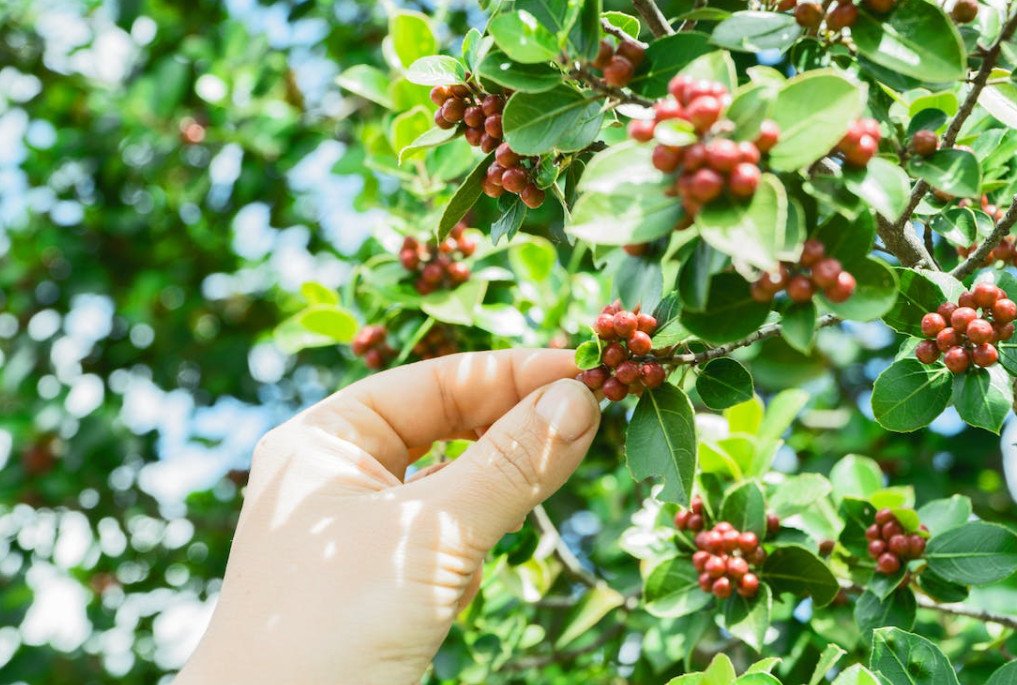
What You Need to Know About Coffee Grades
Share
If you are a coffee enthusiast searching for the finest cup of coffee, you might have found yourself scrolling through a coffee list and taking notice of details such as types, roasts, and grades. All this information depends on the coffee’s origin and preparation. The types (Arabica, Liberica, or Robusta) and roasts (light, medium, or dark) are sometimes indicated on the packaging itself. To dive deeper, you can read about coffee grades here.
IMAGE:https://www.pexels.com/photo/coffee-beans-1695052/
However, the grading systems in different parts of the globe are still patchy. The world is yet to have a universal coffee grading system. Every country has its own. For example, a Grade 1 from Indonesia is not similar to Peru’s Grade 1. An EP from Colombia may also be different from an EP from Honduras.
Fortunately, there are elements and criteria that you can look into to back the fragmented grading systems. Altitude or region, bean density, botanical variety, cup quality, number of defects, processing, roast appearance, and screen size can be considered.
Most coffee sellers grade their coffees through defect count, the screen size of the bean, and by tasting the coffee, also known as cupping. In other terms, they classify their coffee by looking closely, measuring the size, and tasting it.
One of the prime systems for recognizing, labeling, and categorizing defects is the SCA Green Arabica Classification System (GACCs). It distinguishes primary and secondary defects.
The primary or full defect affects the cup quality. They can be entirely black, full sour, or severely damaged. On the other hand, secondary defects do not harm the coffee’s taste. This is why experts developed another system where bean defects are counted.
A certain number of defective beans is needed to count as one defect. For example, one entirely black bean equals one defect. Similarly, ten beans with slight insect damage also count as one defect.
Don’t worry. You won’t find primary defects in your coffee. The GACCS allows only five secondary defects within a batch of specialty coffee.

After being harvested, the beans are poured into large screens with round holes that separate the coffee beans by size. Typically, the large beans stay in the upper screens while the smaller beans fall through and end up in the smaller-sized sieve. Gravity helps in this process.
Another reason why screen size plays an essential role in the coffee grades is roast uniformity. If you think about it, if you roast a batch containing all the coffee bean shapes and sizes, you’ll probably end up with inconsistently roasted beans. Heat application won’t be uniform when roasting uneven beans. Some will be over-roasted, and others will be under-roasted.
The screening method was developed based on the theory that coffee grown at high altitudes is denser, larger, and more flavorful. Because of this, the bigger the beans, the higher their prices. The beans are then bagged per screen.
Indeed, there is an exception to this rule. The screen size of Ethiopian coffee is often smaller compared to other origins. Ethiopian coffees grow around the screen size 14/64 only. However small they are, the beans develop slowly. They have excellent density and, if high in quality, taste extraordinary.
After the screen size protocol, the coffee is roasted and cupped to evaluate its other characteristics.
In this process, the cupper’s perception of quality is also determined. Specific flavor attributes are analyzed and then rated on a numeric scale.

Grade 1: Specialty Grade Coffee Beans The highest grade of coffee beans must have no primary defects and a maximum of three defects.
They have a maximum of 5% above and below the specified screen size.
In cupping, these beans bring out a distinct attribute in one of the areas of taste, acidity, body, or aroma. They are free of cup faults and taints. Neither Quakers nor unripe or poorly roasted beans are allowed in this grade.
Grade 2: Premium Grade Coffee Beans The second highest grade of coffee beans is likely the one you drink most often. These are almost the same as Grade 1 coffee beans but with a maximum of three Quakers and up to eight defects.
Grade 3: Exchange Grade Coffee Beans The size of Grade 3 coffee beans is between 50% above screen 15 and 5% below it. They are free from faults but have a maximum of five Quakers and 9-23 defects.
Typically, you can find these among supermarket brands.
Grade 4: Standard Grade Coffee Beans Standard Grade has 24 to 86 defects per 300 grams.
Grade 5: Off-Grade Coffee Beans Off-Grade Coffee beans have more than 86 defects per 300g.
Coffee grades function as a compass to help you find the perfect cup of joe. Knowing how to read them can help you to identify, pick, and explore new coffee offerings from a menu.
If you are looking for high-grade coffee, Dr. Paulo’s offers the best Kona coffee, which is grown in Ohana farms located in Captain Cook and Honaunau, Hawaii, where rich soil and good conditions provide a unique and excellent growing environment.
IMAGE:https://www.pexels.com/photo/coffee-beans-1695052/
What Are Coffee Grades?
Coffee grades define the level of quality of your java. It is a quality classification. A coffee grade aids sellers and buyers worldwide to align expectations with one another. Even without taking a sip, you can have a rough sense of the quality if you know the coffee grade.However, the grading systems in different parts of the globe are still patchy. The world is yet to have a universal coffee grading system. Every country has its own. For example, a Grade 1 from Indonesia is not similar to Peru’s Grade 1. An EP from Colombia may also be different from an EP from Honduras.
Fortunately, there are elements and criteria that you can look into to back the fragmented grading systems. Altitude or region, bean density, botanical variety, cup quality, number of defects, processing, roast appearance, and screen size can be considered.
Most coffee sellers grade their coffees through defect count, the screen size of the bean, and by tasting the coffee, also known as cupping. In other terms, they classify their coffee by looking closely, measuring the size, and tasting it.
The Elements of Coffee Grades
Coffee Defects
Coffee beans are always at risk. Before the harvest, insects and other animals can damage the seeds. They can put small black holes on the surface of the green beans. Processing machines can cause chipped and broken beans. Whole black beans suffered water deprivation or overfermentation at the farm. These are vital because the fewer the defects in the beans, the higher the grade they can get.One of the prime systems for recognizing, labeling, and categorizing defects is the SCA Green Arabica Classification System (GACCs). It distinguishes primary and secondary defects.
The primary or full defect affects the cup quality. They can be entirely black, full sour, or severely damaged. On the other hand, secondary defects do not harm the coffee’s taste. This is why experts developed another system where bean defects are counted.
A certain number of defective beans is needed to count as one defect. For example, one entirely black bean equals one defect. Similarly, ten beans with slight insect damage also count as one defect.
Don’t worry. You won’t find primary defects in your coffee. The GACCS allows only five secondary defects within a batch of specialty coffee.

Screen Size
Coffee beans can come in different shapes and sizes. 20/64 of an inch is the largest coffee screen size. 8/64 of an inch is the smallest. The acceptable screen sizes for your favorite beverage are within this range.After being harvested, the beans are poured into large screens with round holes that separate the coffee beans by size. Typically, the large beans stay in the upper screens while the smaller beans fall through and end up in the smaller-sized sieve. Gravity helps in this process.
Another reason why screen size plays an essential role in the coffee grades is roast uniformity. If you think about it, if you roast a batch containing all the coffee bean shapes and sizes, you’ll probably end up with inconsistently roasted beans. Heat application won’t be uniform when roasting uneven beans. Some will be over-roasted, and others will be under-roasted.
The screening method was developed based on the theory that coffee grown at high altitudes is denser, larger, and more flavorful. Because of this, the bigger the beans, the higher their prices. The beans are then bagged per screen.
Indeed, there is an exception to this rule. The screen size of Ethiopian coffee is often smaller compared to other origins. Ethiopian coffees grow around the screen size 14/64 only. However small they are, the beans develop slowly. They have excellent density and, if high in quality, taste extraordinary.
After the screen size protocol, the coffee is roasted and cupped to evaluate its other characteristics.
Cupping
The final element of coffee grading is sensorial analysis, also known as cupping. Professionals assess a coffee sample’s acidity, aroma, balance, body, flavor, and sweetness through this protocol. They also see any fault issues, such as uniformity and cleanliness.In this process, the cupper’s perception of quality is also determined. Specific flavor attributes are analyzed and then rated on a numeric scale.

Coffee Grades
Based on the discussed elements above, coffee grades are as follows:Grade 1: Specialty Grade Coffee Beans The highest grade of coffee beans must have no primary defects and a maximum of three defects.
They have a maximum of 5% above and below the specified screen size.
In cupping, these beans bring out a distinct attribute in one of the areas of taste, acidity, body, or aroma. They are free of cup faults and taints. Neither Quakers nor unripe or poorly roasted beans are allowed in this grade.
Grade 2: Premium Grade Coffee Beans The second highest grade of coffee beans is likely the one you drink most often. These are almost the same as Grade 1 coffee beans but with a maximum of three Quakers and up to eight defects.
Grade 3: Exchange Grade Coffee Beans The size of Grade 3 coffee beans is between 50% above screen 15 and 5% below it. They are free from faults but have a maximum of five Quakers and 9-23 defects.
Typically, you can find these among supermarket brands.
Grade 4: Standard Grade Coffee Beans Standard Grade has 24 to 86 defects per 300 grams.
Grade 5: Off-Grade Coffee Beans Off-Grade Coffee beans have more than 86 defects per 300g.
Coffee grades function as a compass to help you find the perfect cup of joe. Knowing how to read them can help you to identify, pick, and explore new coffee offerings from a menu.
If you are looking for high-grade coffee, Dr. Paulo’s offers the best Kona coffee, which is grown in Ohana farms located in Captain Cook and Honaunau, Hawaii, where rich soil and good conditions provide a unique and excellent growing environment.
